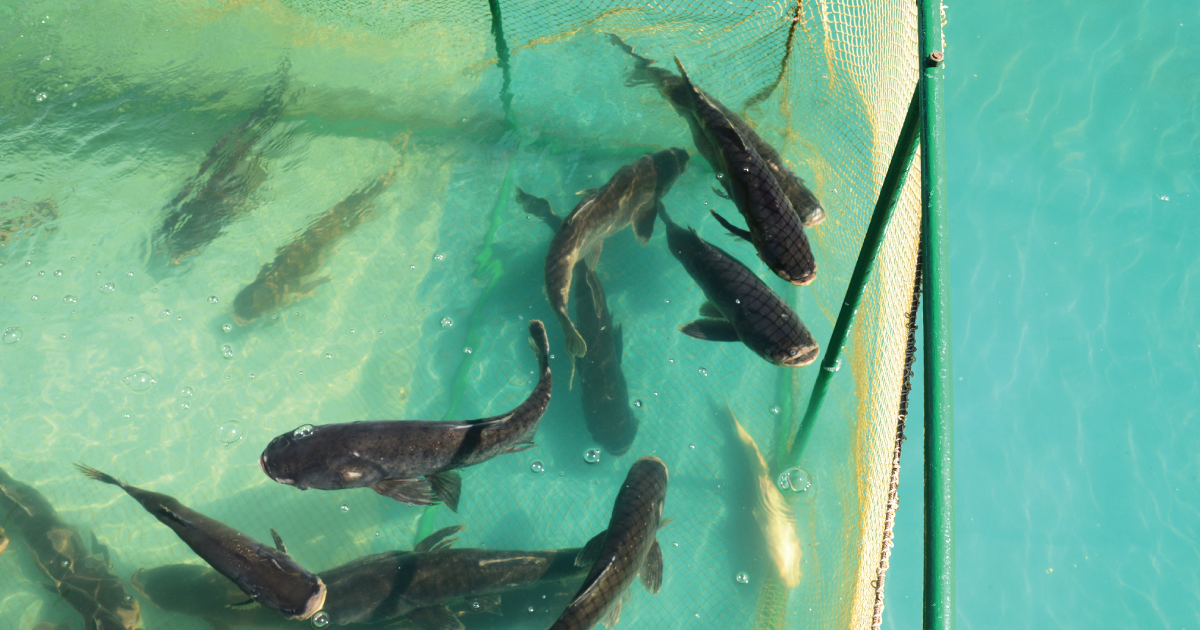
Swimming in Circles: Aquaculture and the End of Wild Oceans
"The way the promoters — at the time, a company called Ocean Products — sold it to us was [by] saying, 'You can become farmers of the sea. You can start giving back to the ocean.' We bought it hook, line and sinker … Last summer, there were about six of us standing on the dock in Eastport, saying, 'Geez, we thought this was going to be great.'"
September 30, 2018 | Source: Mercola.com | by Dr. Joseph Mercola
In this interview, investigative journalist and fishing industry insider Paul Molyneaux discusses aquaculture and the dangers of farmed fish, which are also the topics of his book “Swimming in Circles: Aquaculture and the End of Wild Oceans.”
From my perspective, the two most dangerous foods served in most restaurants are factory farmed chicken, which is responsible for a majority of foodborne illnesses, and farmed fish, especially farmed salmon, which is among the most toxic foods on the planet.
Salmon Farming in Cobscook Bay
At the age of 17, Molyneaux left home and got a job in commercial fishing, which led to work in aquaculture in the late ’70s.
“I always had an interest in aquaculture, although I primarily was a commercial fisherman. In the late ’80s, I ran a fish processing plant for the Passamaquoddy tribe in Eastport, Maine, on Cobscook Bay. There was a sudden push to do salmon farming in the bay.
The way the promoters — at the time, a company called Ocean Products — sold it to us was [by] saying, ‘You can become farmers of the sea. You can start giving back to the ocean.’ We bought it hook, line and sinker … Last summer, there were about six of us standing on the dock in Eastport, saying, ‘Geez, we thought this was going to be great.'”
As fisheries had dwindled, they believed aquafarming would be the answer to keeping the fishing industry alive. Alas, the industry was rapidly consolidated into the hands of just a few players. “Now, it’s in the hands of one,” Molyneaux says.
What’s worse, it didn’t take long before the environmental downsides of aquaculture became readily apparent as well. In the late 1990s, infectious salmon anemia virus spread like wildfire among the salmon pens in Cobscook Bay, wiping out the fishery as 2 million fish had to be discarded overnight.
“That set the industry back. Now, it’s owned by one company — Cooke Aquaculture — and pretty much everything is automated. They have a tremendous sea lice problem.
They’re pouring tons of SLICE into those pens, and they’re coming up with new systems now because they’re finding the sea lice medication is now in the mollusks, like the scallops that are also harvested from the bay. Cooke has been fined twice in the last five years for using an illegal chemical, cypermethrin, to fight sea lice.”
Industrialized Food Supply Encouraged Switch to Aquaculture
In his book, Molyneaux reviews the economics of the fishing industry, then and now. Three decades ago, many towns would have local fish markets, which in coastal areas would sell a wide variety of locally caught fish.
Virtually all fish markets have now been replaced by chain stores that use computerized systems to maintain a consistent supply of specific fish, and this industrialization really pushed aquaculture forward.
“In dealing with the vagaries of wild fisheries, where maybe today you have one species, tomorrow you have another — ‘Yesterday I caught pollock. Today caught haddock. Then I couldn’t get out because of a storm’ — these companies were going, ‘Oh, geez. We can’t deal with this, but we can deal with farmed salmon. That’s right there, and we can have a schedule of set price.’
Because of the [varying] availability of wild fish, the price varies. These larger companies are saying, ‘Go ahead with that aquaculture, because that’s perfect for us.'”
https://www.youtube.com/watch?v=1TgfjqBkEqA
